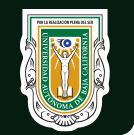Faculty of Arts
La Facultad de Artes Mexicali fue creada por acuerdo del H. Consejo Universitario el 31 de enero de 2024. Su origen derivó de la escisión de la Facultad de Artes, creada en mayo de 2003 y que tuvo como antecedente el programa de cursos culturales de la UABC, iniciado en 1983.
Actualmente, la facultad cuenta con cuatro programas de licenciatura: Artes plásticas, Danza, Artes cinematográficas y producción audiovisual, y Animación digital y efectos visuales. Además, se atiende a las unidades académicas del Campus Mexicali con el programa de Actividades culturales con valor en créditos.
La Facultad de Artes Mexicali es sede del Centro de Estudios y Producción Audiovisual, órgano interno de la unidad académica que tiene por objetivos divulgar el conocimiento, apoyar el proceso enseñanza-aprendizaje y difundir la imagen de la institución mediante la creación artística.

The Faculty of Arts recognizes the changing dynamics and evolving nature of artistic practice at the local, national and international levels. We are a Faculty that welcomes and integrates all disciplines of the arts, in an effort not only to incorporate knowledge and stimulate artistic production, but also to recognize the vitality and importance of art in our lives. This is why we strive to develop creative human beings, with initiative and a critical sensitivity towards the needs of our communities, as well as an impulse to explore and expand the possibilities of the arts, both in their expressive means as in the strategies required to promote them in our cultural environment.
This Faculty seeks to train professionals in the field of arts, conceived as creative subjects who approach the arts from a dynamic cultural perspective, who value their expressive possibilities and historical background, who echo the issues and concerns of our time, always in search of strategies to stimulate creativity, an appreciation for art and its dissemination in their community, stemming from a global perspective.
In this sense, the Faculty visualizes its future as an institution recognized on a national and international level, in terms of the production and promotion of the arts, with creators both in the academic staff and within our graduates, who assume an outstanding level of involvement within their respective disciplines, in the advanced field of art education, stimulating the development of scientific knowledge derived from art research and study. In this same manner, it will emerge as a site for art knowledge that encourages a collaborative environment with various actors and cultural institutions in the field of art production and promotion, always in search of innovative strategies to promote cultural and artistic development in the region.
The UABC Educational Model is based on a vision of education that is conscious of the main issues that surround the world around us, a world driven by the advancement and social integration of technology in a globalized context, that recognizes the fundamental challenges of our future, among which is the case of intercultural dialogue, which feeds and drives the visions and perspectives of the creation and dissemination of the arts.

The underpinning philosophy of the model is based on a humanistic foundation, which establishes the guidelines for students to build their knowledge and recognize that education should be developed throughout their lives. These two elements have a fundamental impact on art students, since the artistic creator is a person who accumulates knowledge and experiences of his own life in order to pour them into his or her own work.
To achieve these goals, the model establishes a structure for student-centered learning for the development of their artistic skills, as well as for developing a critical discourse that is sensitive to the social and aesthetic conditions and characteristics of their reality. Such learning is directed towards a competency-based approach, derived not only from training in the technical rudiments and historical-cultural knowledge of a discipline, but also from a constant reflection of their work as artists. This dynamic recognizes that students could be able to use various learning modalities for acquiring their skills and knowledge, as well as the need to extend their activity towards social and institutional environments that currently demand a certain level of professionalism in the field, as well as the possibility of facilitating experiences for student exchange that allow them to learn in other geographical and socio-cultural contexts.
In this sense, the model is a milestone for an arts student to identify the potential of his or her future as creator, manager, researcher or promoter of artistic activity in his or her community; the flexible qualities and the attribute of an overall personal development allow students to have a vision of their professional development that leads them to explore all the horizons and possibilities that artistic expression offers as an inherent part of the human experience.

